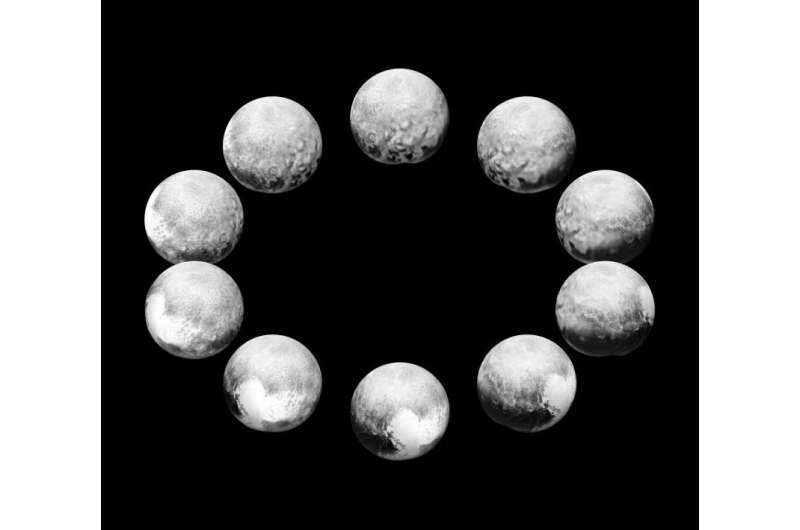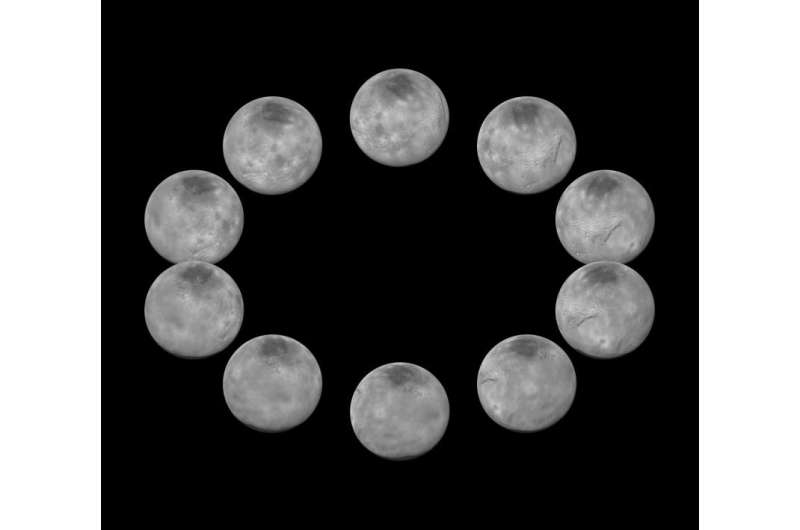NASA images: A day on Pluto, a day on Charon

Pluto's day is 6.4 Earth days long. The images were taken by the Long Range Reconnaissance Imager (LORRI) and the Ralph/Multispectral Visible Imaging Camera as the distance between New Horizons and Pluto decreased from 5 million miles (8 million kilometers) on July 7 to 400,000 miles (about 645,000 kilometers) on July 13. The more distant images contribute to the view at the 3 o'clock position, with the top of the heart-shaped, informally named Tombaugh Regio slipping out of view, giving way to the side of Pluto that was facing away from New Horizons during closest approach on July 14. The side New Horizons saw in most detail – what the mission team calls the "encounter hemisphere" – is at the 6 o'clock position.
These images and others like them reveal many details about Pluto, including the differences between the encounter hemisphere and the so-called "far side" hemisphere seen only at lower resolution. Dimples in the bottom (south) edge of Pluto's disk are artifacts of the way the images were combined to create these composites.
Charon – like Pluto – rotates once every 6.4 Earth days. The photos were taken by the Long Range Reconnaissance Imager (LORRI) and the Ralph/Multispectral Visible Imaging Camera from July 7-13, as New Horizons closed in over a range of 6.4 million miles (10.2 million kilometers). The more distant images contribute to the view at the 9 o'clock position, with few of the signature surface features visible, such as the cratered uplands, canyons, or rolling plains of the informally named Vulcan Planum. The side New Horizons saw in most detail, during closest approach on July 14, 2015, is at the 12 o'clock position.

These images and others like them reveal many details about Charon, including how similar looking the encounter hemisphere is to the so-called "far side" hemisphere seen only at low resolution – which is the opposite of the situation at Pluto. Dimples in the bottom (south) edge of Charon's disk are artifacts of the way the New Horizons images were combined to create these composites.
Provided by NASA





















